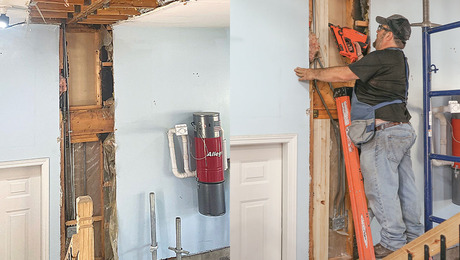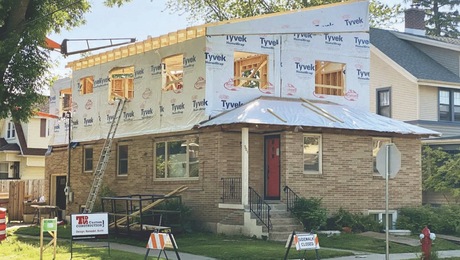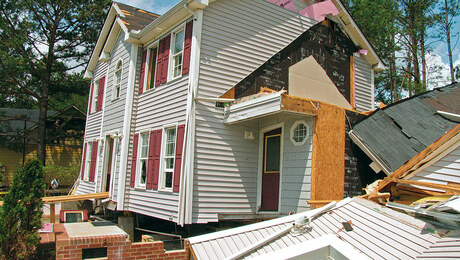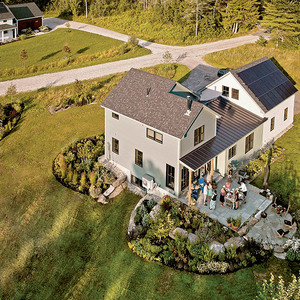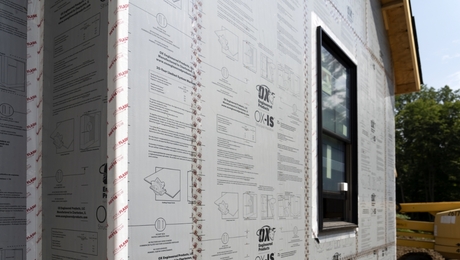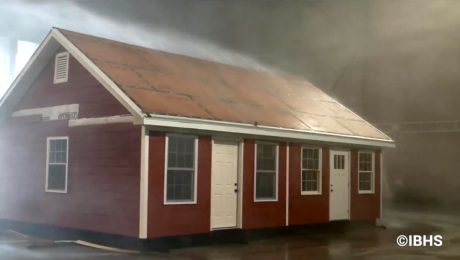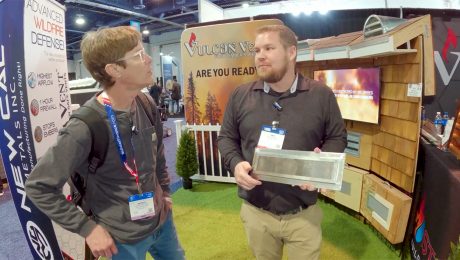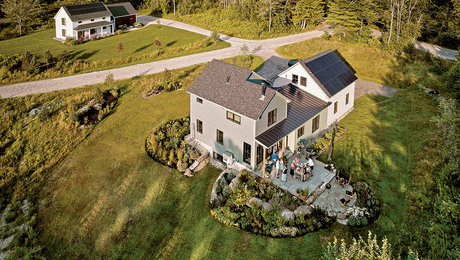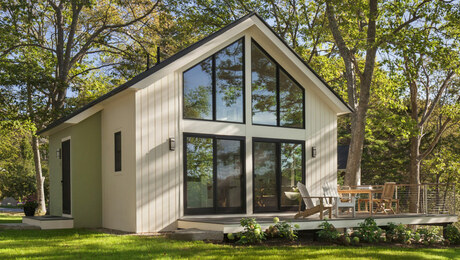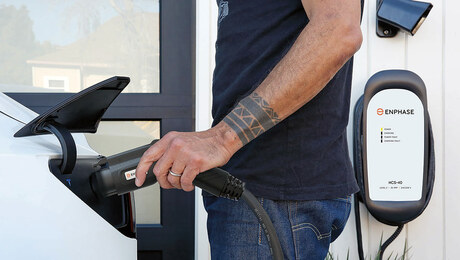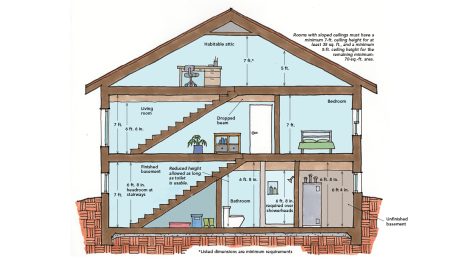Why Is Indoor-Air Pollution Largely Unregulated?
Pollutants are all around us, but regulation of air quality largely stops at the front door.

Synopsis: In this article originally published by Rocky Mountain Institute, Christian Roselund discusses the lack of guidelines and enforcement for managing air pollution indoors. He discusses which regulatory bodies have determined standards for carbon monoxide and nitrogen dioxide levels, and describes how far we still have to go. He cites the gas stove as one of the most dangerous pollutants of indoor air, explaining that the lack of federal requirements for venting these appliances mean indoor air pollution can reach levels that would be illegal outdoors.
When most of us think of air pollution, we typically envision big smokestacks billowing clouds of noxious gases, the smog that coats major cities, or even the smoky haze that drifts in from wildfires. However, much of the most serious air pollution that threatens our health comes not from giant power plants or freeways, but from inside our homes.
Indoor-air pollution comes from a variety of sources. The U.S. Environmental Protection Agency (EPA) has identified building materials, furnishings, and mold as serious concerns, but much of the danger also comes from burning things. For instance, smoking cigarettes or burning wood for heating or cooking can create pollution in homes that can threaten the health of those who live there. This is a particularly big issue in the developing world.
But even if you live in an affluent nation, and you don’t smoke or have a woodstove, that doesn’t mean that there isn’t dangerous air pollution in your home. And unlike the visible smoke and particles from these sources, the pollution from burning fuels such as gas and propane is largely invisible.
In particular, burning natural gas produces carbon monoxide (CO). CO is an odorless, colorless gas, and enough of it at one time can kill you. It also produces nitrogen dioxide (NO2), which at high concentrations can be seen as a reddish-brown gas, but which is also dangerous at invisible levels, and likewise is a threat to human health. We are largely unprotected from these invisible threats.
Stopping at the doorway
Air pollution is regulated in much of the world. In the United States, the first moves at the federal level came in the 1950s, with the first real enforcement in 1967. But the big breakthrough came three years later with the passage of the Clean Air Act of 1970, and the establishment of the EPA.
Since that time, the air in the U.S. has gotten demonstrably cleaner. By 2018, the combined emissions of the six main pollutants tracked by the EPA had fallen by 74%, even as our population and economy both grew substantially.
However, in the U.S., regulatory progress largely stops at the doorway. This is not to say that there aren’t standards for levels of CO and NO2; many bodies have set standards and guidelines for both. In the United States, the EPA, the National Institute for Occupational Safety and Health (NIOSH), and the Occupational Safety and Health Administration (OSHA) have set CO guidelines, but the EPA’s guidelines only apply to outdoor air.
“Even if you live in an affluent nation, and you don’t smoke or have a woodstove, that doesn’t mean that there isn’t dangerous air pollution in your home.”
OSHA, NIOSH, and others have set NO2 standards, and the World Health Organization (WHO) has set guidelines for both—including for indoor air. But there is a lot of space between current guidelines and what may be necessary to protect public health. A gathering of global experts convened in 2015 to assess the latest evidence for strengthening the WHO guidelines. Of the five immediate priority pollutants identified for strengthening guidelines, two were CO and NO2.
Brady Seals worked for over a decade on clean cooking options for the developing world, before joining Rocky Mountain Institute’s Building Electrification Program last year. She warns that the standards and guidelines that are in place both in the U.S. and globally are outdated and may be too weak. “WHO set indoor guidelines ten years ago, but since that time we have learned so much more about the harmful health effects of pollutants,” Seals says. “The guidelines today are not fully protecting us.”
Enforcement is needed
Even if the guidelines were strong enough, there’s a bigger problem: They aren’t enforced. To date, most of the laws that have an effect on indoor-air pollution have been at the state level, and have involved banning smoking in public places.
As for other dangers of air pollution, the guidelines set by federal and international agencies don’t translate into much action on the ground. “Most of these are voluntary guidelines and are not enforceable by the agency that sets them,” explains Seals.
There are federal agencies, such as the Consumer Product Safety Commission (CPSC), that could enforce indoor guidelines or set safety standards, but so far they have not. As referenced in a May 11 article by David Roberts of Vox, in 1986, an EPA report called on the CPSC to do a better job of assessing the dangers from gas stoves. Thirty-four years later, there’s no real action.
So, in order to actually protect health, there are two problems that need to be addressed: “One, are these guidelines good enough… and then how do we make the guidelines enforceable, and how do we use them?” Seals says.
The gas stove
Of all the dangers to safe indoor air, one stands out for its immunity to regulation: gas stoves, which were explored in a recent report by Rocky Mountain Institute (RMI). Unlike other appliances that burn fuel indoors, in the U.S. there is no federal requirement that gas stoves be vented to the outside.
This is particularly notable, as gas stoves can cause levels of pollution that would be illegal outdoors. According to the EPA, while homes without gas stoves have CO levels from 0.5 to 5 parts per million (ppm), homes with well-adjusted gas stoves have levels that can run from 5 to 15 ppm, and homes with poorly adjusted gas stoves can be 30 ppm or higher. This is well in excess of the 9 ppm in the EPA’s guidelines.
Likewise, homes with gas stoves show levels of NO2 that are 50% to 400% higher than homes without them. While the EPA does not issue guidelines for indoor NO2, this can mean that the levels inside are higher than the EPA’s guidelines for outdoor-air pollution.
This is a particularly serious problem, given that even before the practice of self-quarantining and stay-at-home orders, Americans were already spending 90% of their time indoors.
Tackling the problem
There are moves to address the indoor-air pollution from gas stoves. Based on the most recent science, Canada’s health agency is providing more strict guidelines for NO2, both indoors and outdoors. But so far, enforcement is still lacking.
RMI is working to change that, starting in California. As a first step, in April RMI testified before the California Air Resources Board, asking for stronger indoor guidelines based on the most recent science for NO2. The state of California has the authority to regulate indoor appliances through codes; after stronger guidelines are set, there’s an opportunity to work on enforcement.
The biggest promise comes from the movement to phase out gas stoves and other appliances in new construction altogether, which has begun in California and spread to at least one city in Massachusetts.
We must also reduce fossil fuel use in buildings to meet our climate goals, but there is a need to protect the public from the dangers of pollution, including the pollution that we cannot see.
“In this country, our work is not done until we ensure that all families have a safe and clean way to cook their meals,” says Brady Seals.
Christian Roselund is editorial director at Rocky Mountain Institute. This essay was originally posted at RMI Outlet (rmi.org).
Photo: ©Graham Oliver/123RF.COM
From Fine Homebuilding #295
Learn More About Indoor Air Pollutants and Their Sources
Register for our online course A Path to Better Indoor Air Quality with Monica Rokicki-Guajardo today! You’ll learn how to approach design, construction, and maintenance in new homes and remodels, and how to consider existing homes, with indoor air quality in mind.
